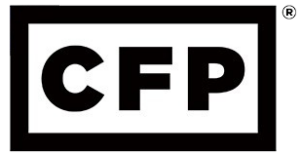An expense that’s discussed as I prepare a financial plan is Medicare. And yes, I include it in almost all plans. Because while many already pay for health insurance, the cost of insurance pre-Medicare comes in all shapes and sizes. I’ve seen companies fully cover the premium for an employee to self-employed clients funding the cost for the entire family. Not to mention covering the cost of co-pays, co-insurance, and deductibles. So depending on the circumstances, Medicare may be a welcomed cost saver or new line item on the budget.
But it’s not as simple as signing up for Medicare and having a set price. Just like with marketplace or employer coverage, you have to make some decisions to determine the best fit which directly influences the cost (see my refresher to understand the different coverage levels and costs for Medicare). Once that’s decided, you also have to be aware that your income throughout retirement will affect the premium. Today we’re going to focus on the Income-Related Monthly Adjustment Amount (“IRMAA”) surcharges that often blindside seniors on Medicare.
The Cost of IRMAA surcharges
IRMAA surcharges impact Medicare Part B and Part D premiums. It does not impact Part A, which is free, or Advantage and Supplement plans since they are optional coverages. At 65, we have a 7-month window to enroll in Part B and D, and failure to do so, apart from a few exceptions, results in a lifetime premium penalty. Therefore, the majority of people turning 65 will find their income newly assessed against the IRMAA brackets which determine their premium above and beyond the 2025 $185 base cost.
MEDICARE PART B/D PREMIUMS FOR 2024
Medicare Parts B and D premiums can be impacted by Modified Adjusted Gross Income* (MAGI). Amounts below are in addition to the base premiums. Amounts are monthly.
*MAGI = AGI + Tax-Exempt Interest

Income used to calculate surcharge
IRMAA brackets go off of Modified Adjusted Gross Income (MAGI) based on a recently filed return. Income that would be included to determine your IRMAA bracket:
- Taxable Social Security
- Taxable Pensions
- Alimony
- Required Minimum Distributions
- Discretionary IRA Distributions
- Roth Conversions
- Business and Real Estate Incomes
- Investment Income
- Capital Gains
And you may have noticed, but the brackets are quite narrow. If you trip into one tier, it’s easy to find yourself a few rows down. This makes having a withdrawal strategy important to accommodate a “good” year from an investment standpoint or an expensive year if you need to pull more than normal from your IRA.
For those who start the financial planning process at or during retirement, the IRMAA situation potentially “is what it is.” If the majority of lifetime savings were put into pre-tax retirement accounts, required minimum distributions and any discretionary distributions to fund expenses will be coming from pre-tax retirement accounts. Each dollar distributed is a dollar of taxable income, which is an unavoidable factor that will trip many into IRMAA surcharges.
Side Note: Keep in mind IRMAA brackets consider your income from 2 tax seasons prior. Meaning 2023 income is what’s influencing your 2025 Medicare Premium Cost.
But the good news is, with a bit of runway and some strategic planning you could create a more diversified net worth that includes Roth and brokerage to help minimize taxable income in retirement. For example, if you need to buy a $30,000 car, instead of pulling from an IRA that immediately adds the full amount to your income for the year, you could pull a mix from the IRA, Roth and brokerage to prevent tripping into avoidable IRMAA surcharge tiers.
Ideally, you work around the definite pieces of income (social security, pensions, required minimum distributions) and use other sources (such as Roth and brokerage) to stay as low as reasonably possible when it comes to IRMAA surcharges. Or you strategically trip an IRMAA bracket but take advantage of it by maxing out the bracket and padding cash for the following year. I employ this with certain clients, where we intentionally trigger but fully max the IRMAA bracket in alternating years, so we’re not just slightly tripping into it every year. Since it’s a flat tax, it makes a ton of sense to consider this route.
Challenging the surcharge
Due to the aforementioned 2 year delay from the point of where income impacts your Medicare premium cost, the first years of retirement or after major life events are typically when Medicare enrollees feel the burn of IRMAA surcharges. For example, when you start Medicare at retirement, your income to determine your Medicare premium will be assessed from two years beforehand, when you may have been at peak earnings. If early on or throughout retirement you have life events like this pop-up, it’s worth either calling Social Security and/or filing the SSA-44 form. They may work with you to update their records with provided information which could directly correct or remove IRMAA surcharges. It’s certainly worth a try!





This Post Has One Comment
Pingback: New Year, New Me - Financial Resolutions - North Andover Financial Planner | Powwow, LLC